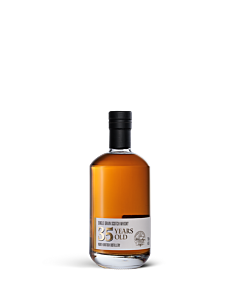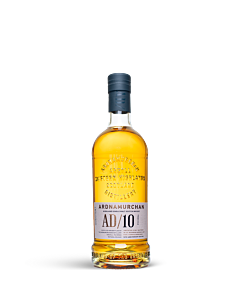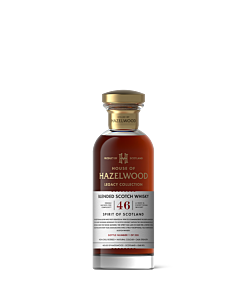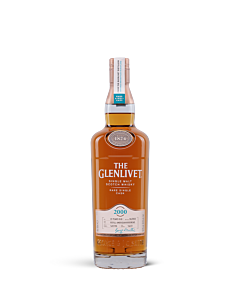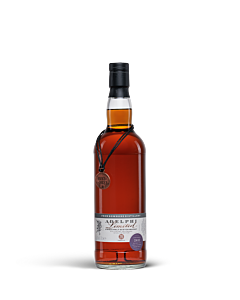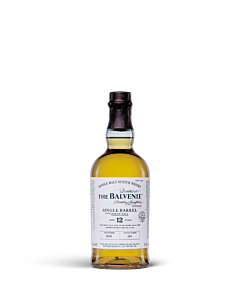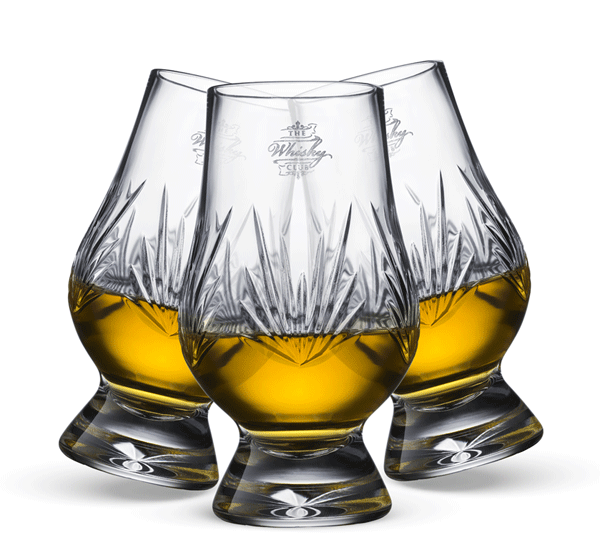Scotch whisky
Love Scotch whisky? Here’s what you’re missing…
With over 130 distilleries producing both malt and grain whisky, Scotland is a major player in the whisky world. But with so many brands to choose from, which are the best Scotch whisky brands? Read on to find out, and don't forget to join the Club free now to secure your bottle of the next Australian-exclusive Scotch whisky from the biggest names in the business.
What is Scotch whisky?
There are five categories of Scotch whisky, all with similar foundations, but with some specific differences in how they’re made that technically set them apart. But before we get to those differences, let’s look at what they’ve got in common.
In order to be called Scotch whisky, the spirit (which must be distilled from some sort of grain, with no other additions) must be aged in oak casks for a minimum of three years, and be bottled at at least 40% ABV. The whisky must be entirely produced, distilled, matured and bottled in Scotland. Whisky made anywhere else in the world is not Scotch.
You’ll often see Scotch whisky with an “age statement” on the bottle. This age statement tells you how many years the whisky was matured for, but must always reflect the youngest whisky contained in the bottle. So, if a distillery was to mix 20 barrels of 30-year-old whisky together, then add one drop of 10-year-old whisky into the vat, it could only be legally sold as a 10-year-old whisky.
With the rise in popularity of Scotch whisky, there’s been a decline in aged stocks at many distilleries, which means we’ve seen an increase in the release of “no age statement” (NAS) whiskies as the distilleries try to meet demand. NAS whiskies are often made using a combination of older and younger spirits, with the blender choosing casks in pursuit of a particular style or flavour profile, instead of worrying about the number on the bottle.
There are five main types of Scotch whisky:
Single malt Scotch must be made entirely from malted barley and be produced at the one distillery
Single grain Scotch must be made entirely from grains and be produced at the one distillery
Blended malt Scotch must be made entirely from malted barley, but can be a blend of spirits from multiple distilleries
Blended grain Scotch must be made entirely from grains, but can be a blend of spirits from multiple distilleries
Blended Scotch must be made from a mixture of both malted barley and grains, and can also be a blend of spirits from multiple distilleries
What are the Scotch whisky regions?
Just as there are many different winemaking regions recognised around the world, Scotland has been divided into five whiskymaking regions, each with its own style. These are Highlands, Lowlands, Speyside, Campbeltown, and Islay.
HIGHLANDS
Covering a massive area in the north of Scotland – and also home to Speyside, which is its own region – the Highlands hold dozens of distilleries, with house styles and flavour profiles as diverse as the countryside they cover. You’ll find everything from light, delicate drams through to big, sherried beasts and salty, peated coastal whiskies.
The Highlands also technically contain the Islands – sometimes considered a region unto themselves – which are equally diverse, stretching from Arran off the south-west coast to the Orkneys and Shetland in the north. Whiskies from the Islands are often strongly (and unsurprisingly) influenced by the ocean.
Great Highland whiskies to try: Glendronach, Glenmorangie, Dalmore, Tullibardine
Great Island whiskies to try: Arran, Jura, Tobermory, Highland Park
LOWLANDS
As you’d expect, you'll find the Lowlands to the south of the Highlands. The Lowlands have traditionally been associated with grain distilleries and blended whisky, but there are still a handful of single malt distilleries operating, and a growing number of new and re-established operations. Lowland whiskies are typically smooth and mellow.
Great Lowland whiskies to try: Bladnoch, Auchentoshan, Glenkinchie, North British (grain), Rosebank
SPEYSIDE
Originally part of the Highlands, Speyside is now recognised as a region unto itself, due to the incredible concentration of distilleries clustered along the River Spey. Some of the most recognisable and influential names in Scottish whisky can be found in Speyside.
Great Speyside whiskies to try: Aberlour, Balvenie, Glenlivet, Glenfiddich
CAMPBELTOWN
Once containing over 30 distilleries, Campbeltown – on the Kintyre peninsula on Scotland's south-west coast – was considered the whisky capital of the world. But times change: a combination of factors led to the Campbeltown industry collapsing almost entirely by the 1920s, and today there are only three distilleries remaining in operation, producing a variety of styles.
Great Campbeltown whiskies to try: Glen Scotia, Glengyle (makers of Kilkerran), Springbank (who produce Springbank, Hazelburn and Longrow from the one distillery)
ISLAY
While Islay (pronounced eye-luh) is an island itself (with Island region distilleries surrounding it), Islay's large number of distilleries mean it’s treated as its own region. Known for its heavy use of peat, your typical Islay single malt is big, bold, and full of delicious (to some) peat smoke.
Great Islay whiskies to try: Ardbeg, Bruichladdich, Lagavulin, Laphroaig
What are the best Scotch whisky distilleries?
This is by no means an exhaustive list, but here are some great Scotch whiskies to get you going:
The Glendronach
In brief: A front-runner for the title of “spiritual home of the Sherry Bomb”.
Region: Highland
Style: Sherry matured, using Pedro Ximénez and Oloroso Sherry Casks. Big, rich and oily, with plenty of dried fruits and a long, sweet finish.
Popular releases: Glendronach 12 Year Old, Glendronach 'Revival' 15 Year Old , Glendronach Traditionally Peated, Glendronach Cask Strength Batch 11
Details:
The Glendronach is one of Scotland’s oldest distilleries and only the second to be granted a license to produce whisky after the Excise Act of 1823. It was founded by James Allardice on the Boynsmill Estate in 1826.
Today – under the guidance of Master Blender Dr Rachel Barrie – Glendronach is famous for its use of Pedro Ximénez and Oloroso Sherry casks. They're also known to dabble with a bit of Highland peat in some of their malts.
Their mastery of Sherry casks has seen Glendronach produce some of the best Scotch whisky money can buy: their flagship 12 Year Old is one of the finest entry-level single malts on the market, and overflows with rich Christmas cake, fruit and milk chocolate notes you'd expect from a heavily sherried Highland dram.
The Macallan
In brief: Luxury in a bottle.
Region: Speyside
Style: Rich, luxurious Scotch. A fruity, full-bodied spirit that's predominantly matured in seasoned Sherry casks to add complexity, fruit notes and winter spices.
Popular releases: Macallan Sherry Oak 12 Year Old, Macallan Double Cask 15 Year Old, Macallan Triple Cask 18 Year Old
Details:
The pre-eminent name in luxury single malt Scotch whisky, The Macallan is one of the most well-known and respected distilleries in Scotland. With old and rare bottles achieving record results at auction, the distillery produces some of the most collectable single malt in the world.
It’s also delicious.
The Macallan is founded on “The Six Pillars” that inform the character of the distillery and its malts. The first is its spiritual home: Easter Eliches House, which was built in 1700 on the 485-acre Macallan Estate. The second is their curiously small stills, which are some of the smallest in Speyside. And while they may be small, there's 24 of them, so they're not messing about. The third and fourth are exceptional oak casks, and Sherry seasoning: Macallan spend more per cask than anyone else, ensuring their new-make only goes into in the best of the best. The fifth is natural colour – nothing artificial here, all the colour comes from the oak. And finally, the sixth pillar is mastery. From the production methods to the people who make it happen, Macallan’s commitment to mastery and excellence at every step of the process has put them at the pinnacle of single malt Scotch.
Glenfiddich
In brief: The name that put single malt Scotch on the map.
Region: Speyside
Style: Orchard fruits – apples and pears – play off ex-American oak maturation, which lends vanilla and light spice.
Popular releases: Glenfiddich 12 Year Old, Glenfiddich 15 Year Old Distillery Edition, Glenfiddich 14 Year Old Bourbon Barrel Reserve, Glenfiddich Gran Cortes XXII 22 Year Old
Details:
One of the only distilleries to use a single source of natural spring water from start to finish (the infamous Robbie Dhu Spring), Glenfiddich has the capacity to produce over a staggering 20,000,000 million litres a year. Easily spotted on the shelf thanks to their distinctive triangular bottle, Glenfiddich is the biggest-selling single malt Scotch whisky in the world.
Overseen by Malt Master Brian Kinsman, the distillery’s family ownership means they’ve been able to hew to tradition (they still use wooden fermenters) and keep many parts of the operation in-house instead of outsourcing: there’s an on-site cooperage, and they’ve even got their own dedicated coppersmith.
While there are a lot of competing claims and confusion (and a lot of evidence to show that single malts were popularly known beforehand), nobody can really argue that Glenfiddich blazed the trail for standalone single malt distilleries. In the early sixties, they released their single malt as an official bottling (in the iconic bottle) for the first time, and opened a visitor’s centre to encourage tourism. And whether you believe they were the first or not, they certainly made their way to the top, and stayed there.
Ardbeg
In brief: Smoky, sweet, and unafraid to get experimental.
Region: Islay
Style: Big, sweet and heavily peated. Tropical fruits of pineapple and lychee mixed with a big oily spirit that showcases a load of peat and smoke on the finish.
Popular releases: Ardbeg 10 Year Old, Ardbeg Spectacular, Ardbeg Uigeadail, Ardbeg Oloroso Sherry Single Cask No. 0050
Details:
Located on the south coast of Islay, Ardbeg has claimed to be the smokiest whisky from Islay, but we reckon the guys at Bruichladdich might have a bit to say about that, with their seriously peated Octomore range. Ardbeg certainly is one of the sweeter Scotches from the island though, thanks largely to their long fermentation times. It also features a rich, oily texture thanks to purifier pipe in the spirit still's lyne arm.
As well as using heavily peated malt, the whisky's matured in ex-Bourbon barrels, Sherry, and wine casks. Ardbeg also love to get experimental and weird: removing the vapour purifier from their still; using “BBQ casks”; naming whiskies after mythical beasts; the list goes on. You’ll rarely see it in the bottle below 46% ABV, and a cask strength Ardbeg is truly something to behold.
Aberlour
In brief: Come for the Sherry, stay for the double casks.
Region: Speyside
Style: Big, malty spirit with hints of red berry and citrus, balanced by maturation in a combination of Sherry and ex-Bourbon casks.
Popular releases: Aberlour 14 Year Old Double Cask, Aberlour A’bunadh Alba, Aberlour 2010 Double Cask Matured, Aberlour 18 Year Old
Details:
While they’re known for their big focus on Sherry cask maturation – Master Distiller Graeme Cruickshank personally selects casks from the bodegas of Jerez in Spain – Aberlour also mature a lot of their whisky in ex-Bourbon American oak barrels. The marriage of these two cask types is at the heart of Aberlour’s house style, and the majority of their whiskies involve both cask types.
With that said, they’re perhaps most famous for the 100% Oloroso Sherry matured Aberlour A'bunadh – which usually goes into the bottle at around 60% ABV, with no age statement – and is considered by many to be one of the best Sherry-matured single malt whiskies on the market today. The distillery’s gained a serious cult following alongside other big sherried whisky houses such as Glenfarclas and Glendronach, but their double casks are well worth exploring if you’ve only ever tried the A’bunadh.
The Glenlivet
In brief: A pioneering single malt that’s definitely still got it.
Region: Speyside
Style: Light, sweet and floral. The quintessential Speyside. Citrus and tropical fruits, with a nice buttery vanilla finish.
Popular releases: The Glenlivet 12 Year Old, The Glenlivet 14 Year Old First Fill ex-Oloroso Sherry Butt, The Glenlivet Nadurra, The Glenlivet 17 Year Old First Fill American Oak
Known as “the single malt that started it all”, Glenlivet Distillery was established in 1824 by farmer George Smith and was the first distillery in Speyside to be licensed under the new Excise Act of 1823. Given this trailblazing pedigree, it’s not hugely surprising that The Glenlivet’s whiskies are still a real benchmark for the classic Speyside style.
George’s innovation was to design incredibly tall, lantern-shaped stills with wide necks (meaning the spirit got maximum contact with the copper), while the height ensured that only the lightest vapour reached the top to condense. This created light, sweet, floral flavours and an estery character in the resulting spirit. This lighter alternative to the dense, rich style of whisky produced in Speyside at the time proved to be hugely popular, and remains so today.
Highland Park
In brief: Big, wild, slightly peated whiskies from the islands of the north (with a viking twist).
Region: Islands
Style: Viscous and full bodied with dried orchard fruits of apples and plums with roast almonds and a touch of peat smoke to round out the palate.
Popular releases: Highland Park 12 Year Old Viking Honour, Highland Park Cask Strength, Highland Park 18 Year Old Single Cask
The name might suggest that the distillery is in the Highlands, but it's actually offshore, on the Orkney Islands off the north-east coast of Scotland – and therefore part of the Islands region. Highland Park smoke around 20% of their barley with local Orcadian peat, giving a slightly different flavour to an Islay or mainland peat. The flavour this gives (as it’s not a huge part of the mash bill) is quite a subtle heathery smoke, but it’s enough to make every Highland Park a distinctive dram.
The other thing associated with the distillery is Oloroso Sherry – the use of ex-Bourbon casks was phased out completely as of 2004 – and whether they’re made with American or European oak, Sherry-seasoned casks are part and parcel of the Highland Park experience.
You might see the odd Viking reference from the distillery, too. Orkney was once a seat of great power in the Norse empire, and the distillery’s original founder, Magnus Eunson (who started distilling illegally in the 1790s) was of Norse descent.
Old Pulteney
In brief: “The Maritime Malt”. A true coastal dram.
Region: Highland
Style: Light and floral (with hints of citrus) balances against vanilla, light American oak spices and a delicate oiliness.
Popular releases: Old Pulteney 12 Year Old, Old Pulteney 2010 Cask Strength, Old Pulteney 14 Year Old Single Cask, Old Pulteney 17 Year Old
Pulteney distillery is in Wick – a fishing port on the northern tip of Scotland – and thanks to this proximity to the sea, their whisky takes on coastal qualities, giving Old Pulteney the nickname of “the Maritime Malt”.
Pulteney's stills are interesting – both stills feature a large boil bulb that's almost the size of the base of the still, and the wash still has an unconventional flat top. The bulbs create a high level of reflux, which would normally make for a cleaner, lighter spirit. But this lightness is offset by the use of a pair of worm tub condensers, which results in a deliciously oily, weighty new-make that still holds enough light notes to be beautifully balanced.
The spirit is then matured largely in ex-Bourbon American oak casks (and about 10% Sherry), which suits the spirit-style down to the ground. The high humidity and relatively low temperature fluctuations make for a slow, gentle maturation that really lets the combination of cask and spirit sing – Pulteney produces some of the best pound-for-pound ex-Bourbon cask matured single malts anywhere, retaining a freshness and lightness even as they push into older age statements.
Lagavulin
In brief: One of Islay’s biggest, most beloved bruisers.
Region: Islay
Style: Bold and rich, with bright citrus and vanilla that’s almost drowned out by dominant rubbery peat smoke, salt, and iodine.
Popular releases: Lagavulin 16 Year Old, Lagavulin Offerman Edition Reviews, Lagavulin Offerman Edition: Caribbean Rum Cask Finish, Lagavulin 26 Year Old The Lion’s Jewel, Lagavulin Distillers Edition
Perched on the water's edge on Islay, right between Ardbeg and Laphroaig, the legendary Lagavulin distillery is famously the favourite dram of both actor and comedian Nick Offerman, and his Parks and Recreation character, Ron Swanson (among many, many others in the whisky world). Heavy on the peat smoke, Lagavulin's malt is famed for its uncompromising boldness.
It was Lagavulin 16 Year Old's inclusion – alongside GlenKinchie 12 Year Old, Cragganmore 12 Year Old, Oban 14 Year Old and Talisker 10 Year Old – in Diageo's Classic Malts range in the late 1980s that shoved the distillery into the limelight. At the time, Diageo thought only the most diehard drammer would even attempt to drink it – such intense smokiness being an uncommon in thing in the early days of single malts. They soon discovered just how wrong they were, with the Laga 16 being regarded by many one of the best Scotch whiskies you can get. Nowadays, Lagavulin runs round the clock just to keep up with demand for the 16 Year Old, and the relatively new-release 8 Year Old. These core expressions are joined by a number of special releases (including the famous Offerman Editions) and a Distillers Edition each year.
Johnnie Walker
In brief: If you’ve never had a Johnnie Walker, you probably should.
Region: Mixed
Style: Blended malt and blended Scotch whisky. Styles will vary from blend to blend, but the quality of the end product is constant.
Popular releases: Johnnie Walker Black Label, Johnnie Walker Green Label, Johnnie Walker 200th Celebratory Edition, Johnnie Walker House "Willow" The Casks Edition
The starting point for many people's journey into Scotch whisky – and the biggest selling Scotch in the world – is Johnnie Walker Red Label. Owned by Diageo, Johnnie's made with a blend of Scotch from many of their distilleries, including Cragganmore, Aberfeldy, Cardhu, Clynelish, Dailuaine, Cao Ila, Linkwood, Talisker and Mortlach (which they call "The Beast of Dufftown"), plus grain whisky, to create a consistent, easy-drinking flavor profile for each blend.
As well as the all-conquering Red, Johnnie’s core range still boasts some of the most respected and well-known drams on the planet: Black Label, Double Black, the storied Blue Label, and the often-overlooked but stellar Green Label, a 15-year-old blended malt made using whisky from only four single malt distilleries.






